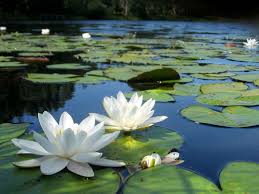WATER LILY

POSIDONIA
1. What are the parts of the plant?
2. Which part is not present in all plants?
3. Which part is underground?
4. Which part of the plant absorbs water and mineral salts?
5. Which part of the plant absorbs carbon dioxide?
6. Which part of the plant transports water and substances to all parts of the plant?
7.What are the two functions of the roots?
8. What are the 2 types of stem?
9. What are the four things needed to carry out photosynthesis?
10. When does photosynthesis take place?
11. Which gas do plants absorb during photosynthesis?
12. Which gas do plants release during photosynthesis?
13 Can photosynthesis happen at night? Explain your anwer.
14. When does plant respiration take place?
15. Which gas do plants absorb during respiration?
16. Which gas do plants release during respiration?
17. What is raw sap?
18. What is elaborated sap?
19 What are the two types of reproduction in plants?
20 What is the difference between these types of reproduction in plants?
21 In which part of flowering-plants does reproduction occur?
22 What is the male part of a flower?
23 What is the female part of a flower?
24 What is the function of the sepals?
25 What is produced in the stamens?
26 Stolon, bulb, rhizome or tuber?
a) specialized stems that grow horizontally above the ground.
b) specialized stems that grow horizontally underground.
c) strawberry.
d) onion.
e) potato.
f) tulip.
g) ginger.
h) irises.
27) What are the two main groups of flowering plants?
28) What are the two main groups of non- flowering plants?
29) Angiosperms, Gymnosperms, Ferns or Mosses?
a) They usually have beautiful flowers.
b) They have got simple flowers.
c) Most of them are evergreen.
d) Their leaves are usually shaped like needles.
e) Examples: cypress and pine trees.
f) They do not have fruits.
g) The seeds are grouped together in cones.
h) They have leaves all year round.
i) They grow on rocks or on the ground.
j) They grow in riverbanks.
k) They are non- flowering plants.
l) They are flowering plants
m) They are the largest group.